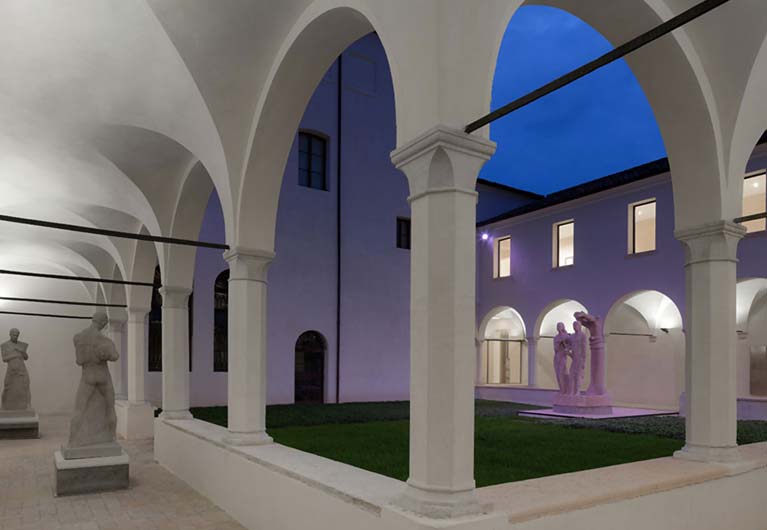Luigi Bailo Museum
Named after its founder, the Luigi Bailo Museum is a major cultural institution in the Treviso area, dedicated to 19th- and 20th-century art. Its outstanding 19th-century art gallery, the extensive and well-documented section devoted to the “Capesarini” group, and the significant presence of Arturo Martini, with over 150 works, are just some of the features that distinguish this collection, a point of reference for modern art enthusiasts and scholars alike.
The museum’s unique architectural layout, built around two large cloisters, recalls the building’s ancient origins. A religious site since the medieval period, it was managed from the mid-15th century by the Jesuat Fathers of St. Jerome, who rebuilt the church and convent complex in the 16th century. In the second half of the 17th century, the complex passed through the hands of the Jesuits, the Somascan Fathers, and finally the Discalced Carmelites, who remained there until 1866, the year the Veneto region was annexed to the Kingdom of Italy.
The property then became the responsibility of the Municipality, which designated the building for educational and cultural use. A little more than a decade later, the Civic Library was transferred here, and the Trivigiano Museum was founded by Abbot Luigi Bailo: a heterogeneous collection of Roman inscriptions, detached frescoes, ceramics, paintings, and sculptures gathered by Bailo over the years and opened to the public in 1888.
Under the direction of Luigi Coletti in the 1930s, the museum incorporated the collection of the Municipal Art Gallery, established with the bequest of Marchesa Margherita Prati Grimaldi in 1851. This valuable collection, reflecting the tastes of a discerning and sensitive collector, was enriched over time through acquisitions, bequests, and donations spanning from the 15th to the 19th century.
In the post-war period, the damage caused by the heavy bombings of 1944 necessitated architectural restoration, which was accompanied by the reinstallation of the interior displays.
By the late 1950s, the Municipal Gallery of Modern Art was formally established at the Borgo Cavour site. This development, prompted by the growth of the collections and the need for space, led to a chronological division of the collections. In the following decades, the “ancient art” section, including archaeology and artworks from the Medieval to the 18th century, was moved to the restored spaces of the former Santa Caterina convent.
Thanks to European funding, the Bailo Museum underwent a radical architectural and structural renovation based on designs by Studiomas Architetti and Heinz Tesar. It reopened in 2015 with a fully renewed facade and interiors. In 2022, the restoration of the north cloister was completed, substantially doubling the exhibition space, an essential expansion for hosting temporary exhibitions and enhancing the display of its extraordinary collection.
